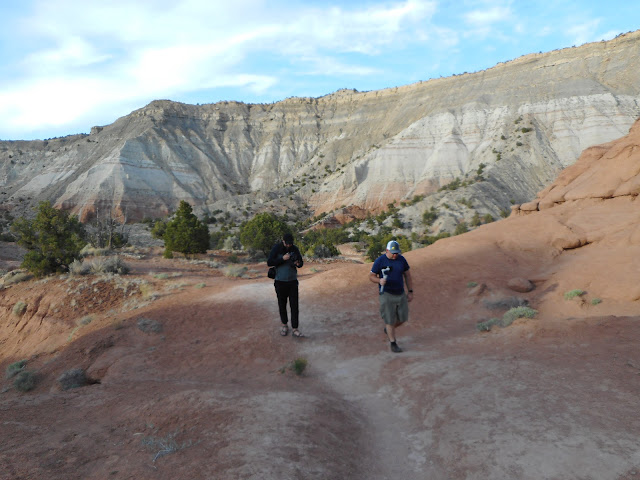By Lynn Arave
Is the Beehive State’s most common
“belly button” joke true? Is Levan, Utah, in Juab County, actually named
for being the word “navel” spelled backwards, since geographically a belly
button would be about where this town is located, in the center of Utah?
As amusing and widespread as this strange name origin is, it is
likely not true. However, myth can supersede fact over time and that is almost
surely what has happened with Levan’s origin.
Consider the following:
-The likely first-ever public reference to the town of Levan was
in the Deseret News on May 6, 1868:
“A new town site has been surveyed
between chicken and pigeon
creeks on the east side of the valley some three and half miles northeast of
the old Chicken Creek settlement. A field has also been surveyed and
improvements have commenced. The new location is called Levan.”
Now one problem here is that you’ve got to
adjust for history and different borders back then. In 1868, there was NO State
of Utah -- that was 28 years distant.
It was the Territory of Utah, with the
borders including a portion of western Colorado and a chunk of Wyoming. Thus,
the Territory was wider in 1868 than today and not as conducive to adding a
"navel" to it, at least where Levan is located.
Wyoming was made a state three months
after the community of Levan began (taking away that "chunk" from
Utah) and the State of Colorado came along in 1876. So, Utah's borders weren't
like today until 1876, eight years after Levan came along.
(Nevada was made a State in 1864, but Utah
territory kept a portion of today's Nevada until boundary changes in January of
1867.)
Even if Brigham Young named the community,
it likely wasn’t for the navel reason.
And, furthermore, why in the world would
Brigham start out a new town with a joke kind of name, given the rough living
conditions of the territory back then?
The masterful book, “Utah Place Names,”
John W. Van Cott states on the Levan monkier: “There are several French, Latin,
or Piute interpretations of the name, suggesting it means East of the Sunrise,
Land of the Sunrise, Rear rank of a moving Army, Frontier Settlement or Little
Water. The tongue-in-cheekers say the name is a reverse spelling of Navel,
because it is located in the center of the state. Several different spellings
have been recorded.”
Any of those meanings probably make more
sense than navel.
Yet, ultimately Navel is still becoming
the origin of the name Levan, because of extreme popular reference over time.
Former Levan Mayor Connie Dubinsky was
quoted in the Salt Lake Tribune on March 4, 1997 as saying,
''We don't really know for sure, but that's what we tell people.'’
So, this is really more a case of almost universal acceptance of a
myth that becomes truth over time. Thus, technically Levan is not a 'belly
button" town, but it is the "Navel" community by default.
AND, ever since one of the last new sections of I-15 opened in
1986 and meant most Utahns bypass Levan, the little town needs ALL the
publicity it can get.
Levan is located about 11 miles south of Nephi along U-28. Before
1986, the majority of drivers went directly through Levan.
Also note too that U.S. Highway 89,
between Logan and Brigham City, is not almost universally called "Sardine
Canyon," even though the actual Sardine Canyon isn't traversed there. Again,
popular usage became the rule.)
Secondly, note also that some local
histories of Levan don’t even have the Chicken Creek reference correct, since
they state that Chicken Creek was Levan’s original name. No, Chicken Creek was
a former settlement, located 3.5 miles northeast of Levan.
-Another strange moniker was the town of Payson’s original title.
It was originally named “Peteetneet.”
It was titled for the
creek in the area and after a local Indian chief. Later, the branch of the LDS
Church was named Peteetneet too. Then, the town was renamed after James Pace, a
settler who led the emigrants there. At first it was spelled “Pacen” and later
“Payson.”
-Here are some other odd Utah names, past and
present:
Delicate Arch in Arches National Park was originally
known by three other names: Schoolmarm's Bloomers, Cowboy Chaps and Mary's
Bloomers.
Fairfield,
west of Utah Lake in Utah County, was first known as Frogtown, for the
plentiful amphibians in the nearby Sevier River.
"Ragtown"
was the original name for Magna, which also, for some reason, surrendered its
attractive second title, "Pleasant Green" too.
Baptist Draw, in Emery
County, received its name when early settler Joe Swasey "baptized"
his dog by tossing it into one of the draw's water pockets.
Bottle Hollow, Uintah
County, was so named because it was a mile-long dump for empty liquor bottles
of U.S. soldiers stationed at Fort Duchesne in the 1880s.
China Lake in Summit
County got its name either after a Chinese man and his mule drowned in it or
because it was said you could sink down to China before reaching the bottom of
the deep lake.
Deadman Ridge, Garfield
County, got the title after Myron Shurts was killed by lightning there in 1912.
SOURCES: Deseret News
Archives, “Utah Place Names,” by John W. Van Cott.
\
\



































